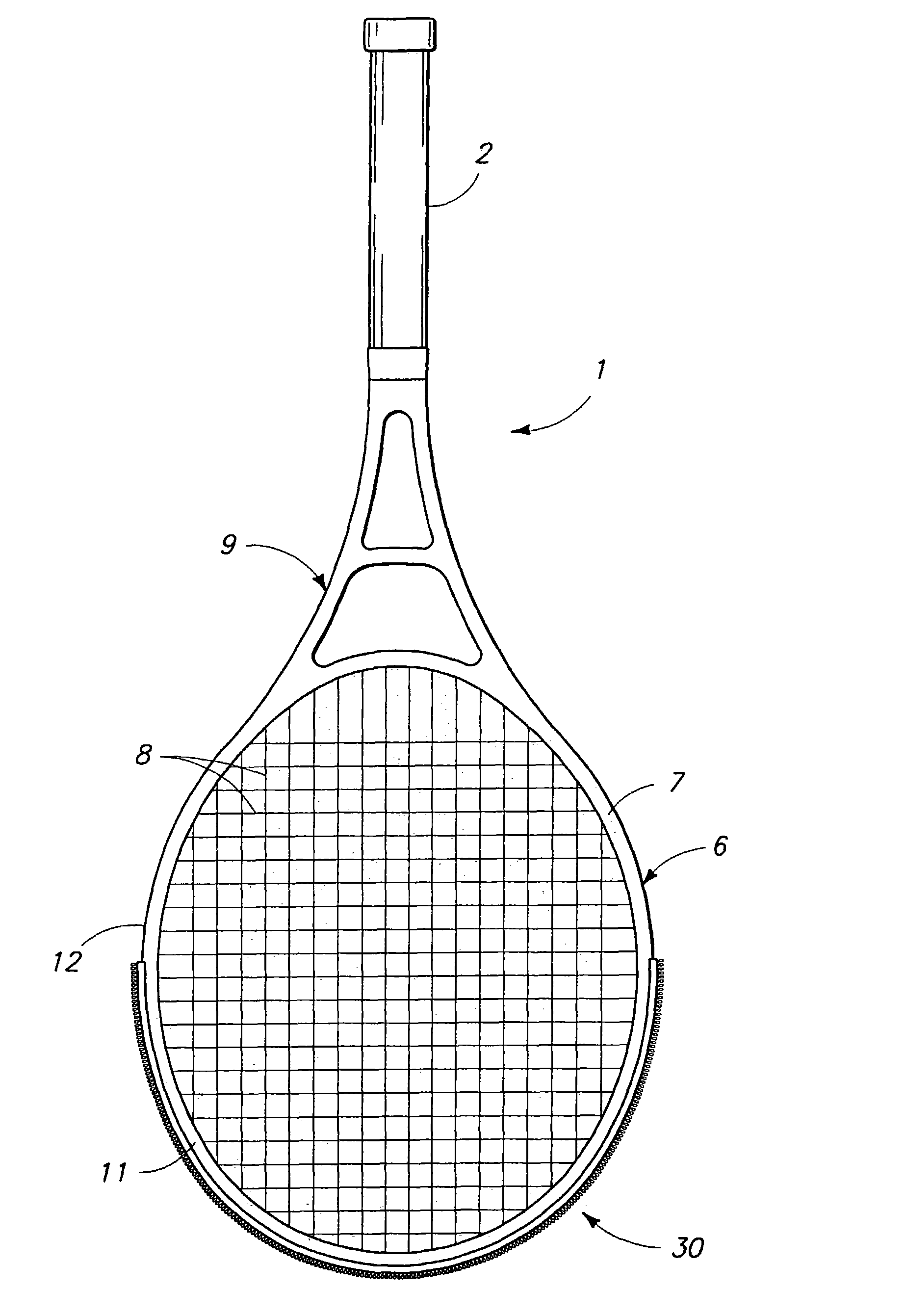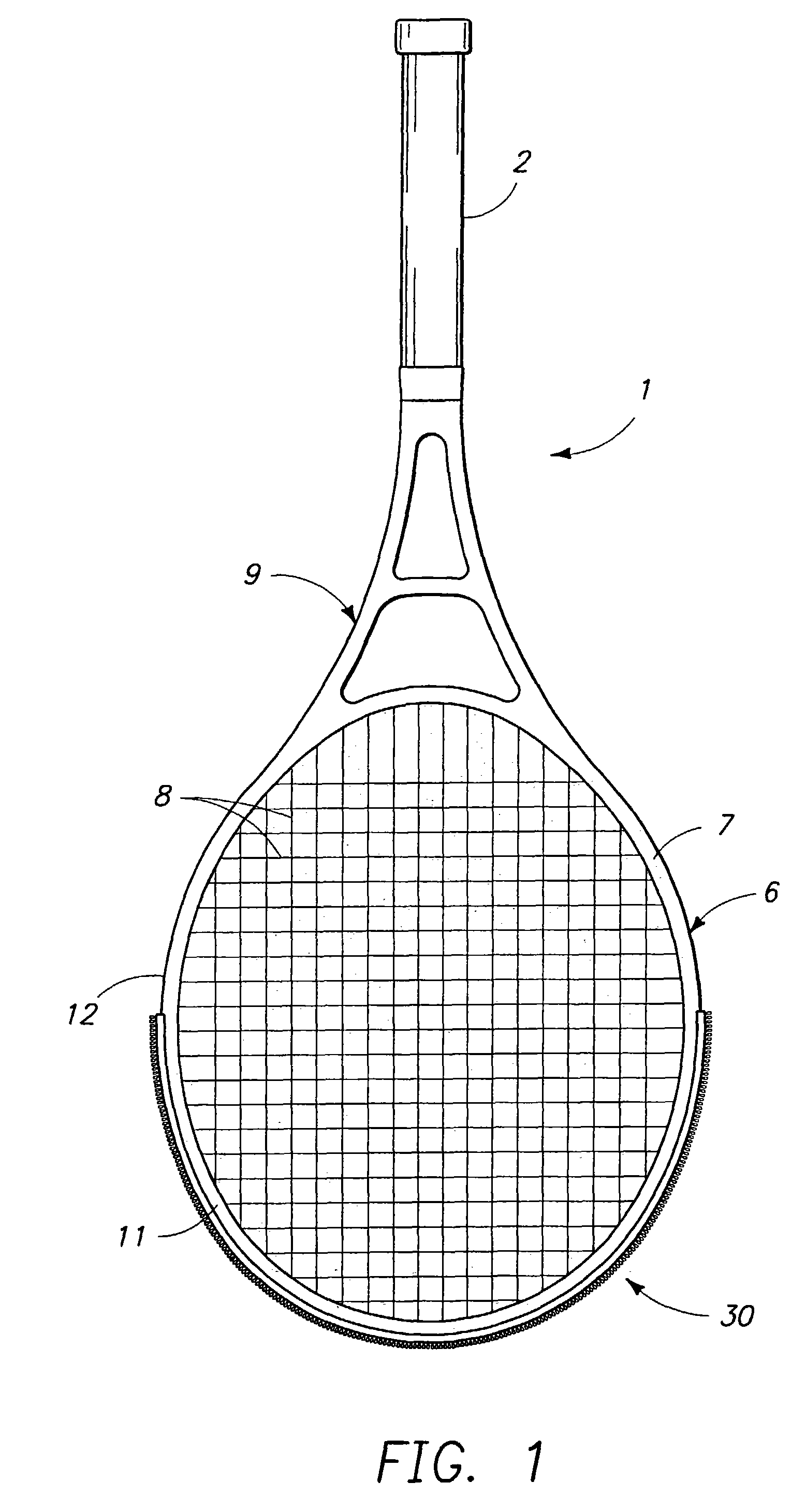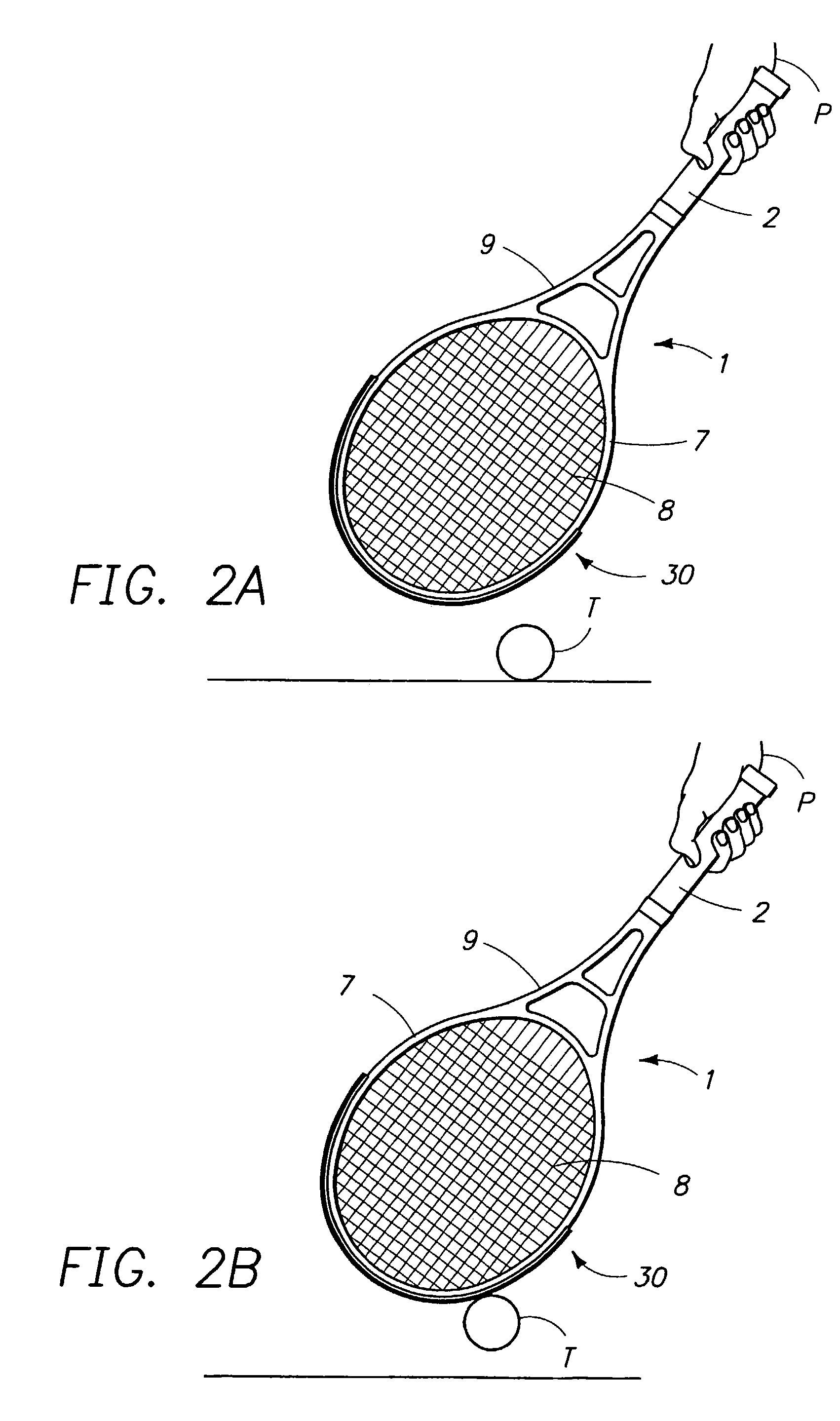Tennis racquet equipped with a tennis ball retriever
- Summary
- Abstract
- Description
- Claims
- Application Information
AI Technical Summary
Benefits of technology
Problems solved by technology
Method used
Image
Examples
example
[0032]After it was unexpectedly discovered that a particular hooked material of a “hook and loop” fabric fastener exhibited unexpectedly superior efficacy of lifting a tennis ball upon tangential contact, a series of tests and studies were then undertaken to ascertain the efficacy of other hooked materials for this purpose. A comprehensive study was undertaken to ascertain the chemical and physical attributes contributing to this unusual phenomenon. A host of different types of hooked materials were adhesively placed to the outside rail of tennis racquet. Except for an unusual hooked material (not normally available at retail outlets), all of the hooked materials failed to exhibit any efficacy in lifting a tennis ball after tangential contact of the material with the tennis ball. After numerous failures, six different types of commercial “hook and loop” and “molded” fasteners representative of various different types of hooked materials were chosen for the test. The test included a ...
PUM
 Login to View More
Login to View More Abstract
Description
Claims
Application Information
 Login to View More
Login to View More - R&D
- Intellectual Property
- Life Sciences
- Materials
- Tech Scout
- Unparalleled Data Quality
- Higher Quality Content
- 60% Fewer Hallucinations
Browse by: Latest US Patents, China's latest patents, Technical Efficacy Thesaurus, Application Domain, Technology Topic, Popular Technical Reports.
© 2025 PatSnap. All rights reserved.Legal|Privacy policy|Modern Slavery Act Transparency Statement|Sitemap|About US| Contact US: help@patsnap.com



